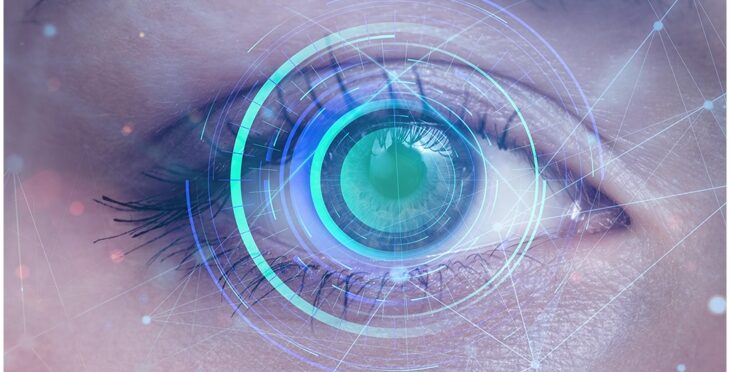Ideal Refractive Surgeries in AL: State-of-the-Art Eye Treatment
Ideal Refractive Surgeries in AL: State-of-the-Art Eye Treatment
Blog Article
The Function of Advanced Diagnostic Tools in Identifying Eye Disorders
In the world of ophthalmology, the use of advanced analysis tools has actually transformed the early recognition and management of different eye disorders. From detecting refined changes in the optic nerve to checking the progression of retinal conditions, these technologies play a crucial function in boosting the accuracy and performance of diagnosing eye problems. As the demand for exact and timely diagnoses proceeds to grow, the combination of advanced devices like optical comprehensibility tomography and visual area screening has ended up being indispensable in the realm of eye treatment. The intricate interplay in between technology and sensory techniques not just clarifies complex pathologies yet also opens doors to customized therapy strategies.
Significance of Early Diagnosis
Early diagnosis plays an essential duty in the reliable monitoring and therapy of eye problems. Prompt recognition of eye problems is vital as it permits punctual treatment, possibly stopping additional development of the illness and lessening long-lasting issues. By finding eye problems at a very early phase, doctor can supply ideal therapy plans tailored to the specific problem, inevitably causing much better results for clients. Very early diagnosis enables people to gain access to necessary assistance services and sources faster, enhancing their overall high quality of life.

Innovation for Spotting Glaucoma
Cutting-edge analysis technologies play a vital role in the very early detection and tracking of glaucoma, a leading root cause of permanent loss of sight worldwide. One such technology is optical comprehensibility tomography (OCT), which provides in-depth cross-sectional images of the retina, enabling for the dimension of retinal nerve fiber layer thickness. This measurement is crucial in evaluating damages triggered by glaucoma. One more innovative tool is visual area screening, which maps the sensitivity of a client's aesthetic area, helping to discover any kind of areas of vision loss quality of glaucoma. In addition, tonometry is made use of to measure intraocular pressure, a major threat variable for glaucoma. This test is important as raised intraocular stress can bring about optic nerve damage. Furthermore, newer innovations like the usage of artificial intelligence algorithms in evaluating imaging information are revealing encouraging lead to the very early discovery of glaucoma. These sophisticated diagnostic tools enable ophthalmologists to diagnose glaucoma in its onset, permitting timely intervention and better management of the disease to avoid vision loss.
Function of Optical Comprehensibility Tomography

OCT's capability to quantify retinal nerve fiber layer density enables for precise and unbiased measurements, assisting in the early discovery of glaucoma also before aesthetic field flaws end up being noticeable. OCT technology permits longitudinal surveillance of architectural changes over time, assisting in customized therapy plans and timely treatments to help maintain patients' vision. The non-invasive nature of OCT imaging likewise makes it a preferred option for checking glaucoma progression, as it can be duplicated routinely without triggering pain to the patient. Generally, OCT plays a crucial function in boosting the analysis accuracy and administration of glaucoma, inevitably adding to better results for people in jeopardy of vision loss.
Enhancing Medical Diagnosis With Visual Area Screening
A necessary part in thorough ocular analyses, aesthetic area screening plays a crucial duty in boosting the analysis process for various eye problems. By analyzing the complete level of a person's aesthetic field, this test provides essential information about the useful honesty of the whole visual pathway, from the retina to the aesthetic cortex.
Aesthetic field testing is particularly beneficial in the medical diagnosis and administration of conditions such as glaucoma, optic nerve disorders, and numerous neurological conditions that can impact vision. Through quantitative dimensions of peripheral and central vision, medical professionals reference can find subtle changes that might suggest the presence or development of these conditions, even prior to obvious signs occur.
In addition, visual field screening permits the surveillance of therapy efficacy, aiding ophthalmologists customize restorative interventions to private patients. eyecare near me. By tracking adjustments in visual area performance with time, doctor can make enlightened decisions concerning adjusting drugs, recommending medical interventions, or carrying out other proper measures to protect or boost a client's aesthetic function
Taking Care Of Macular Degeneration

Final Thought
Finally, progressed analysis devices play a crucial role in identifying eye disorders at an early stage. Technologies such as Optical Coherence Tomography and visual field testing have significantly enhanced the precision and effectiveness of identifying problems like glaucoma and macular deterioration. Early detection enables timely intervention and management of these disorders, ultimately resulting in much better outcomes for clients. It YOURURL.com is necessary for medical care experts to stay upgraded on these innovations to give the ideal feasible look after their patients. eyecare near me.
Report this page